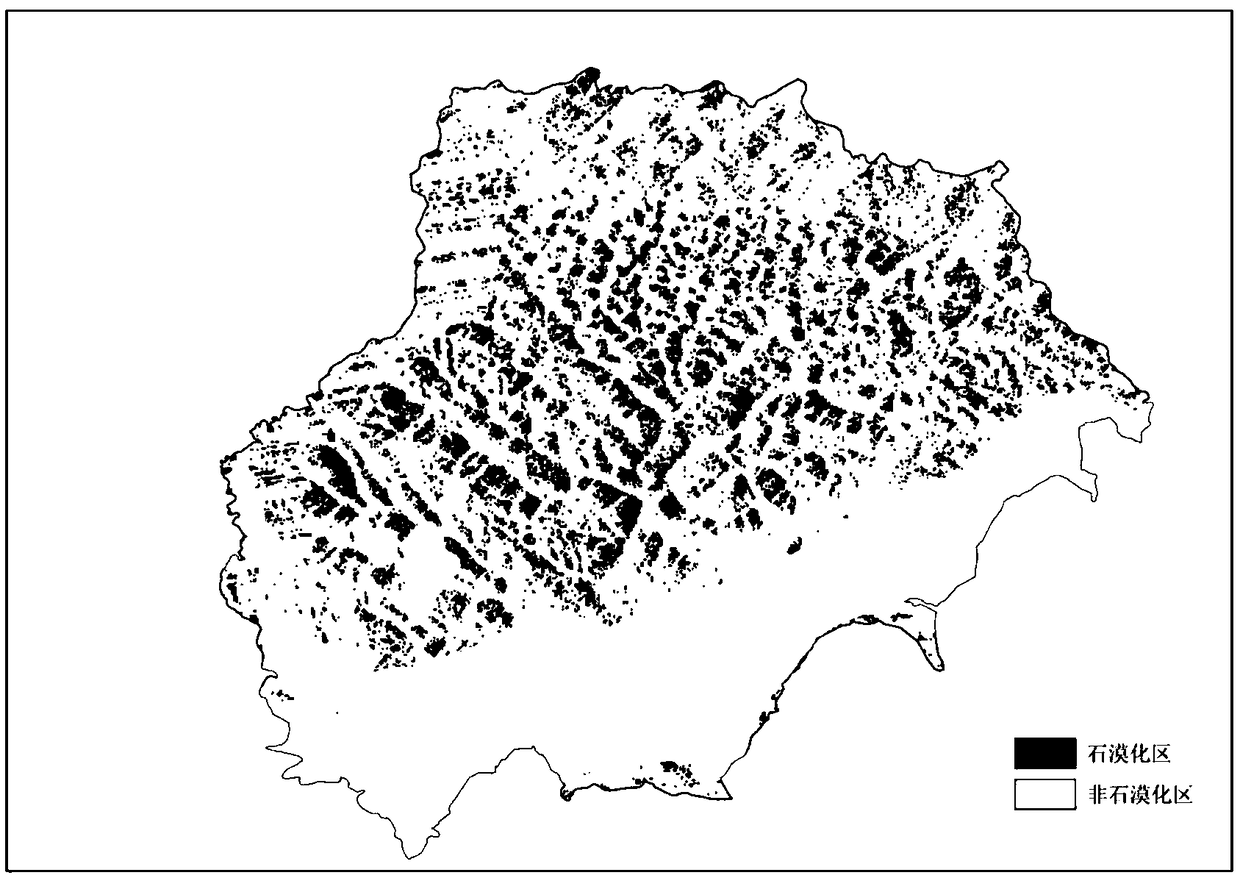Stony desertification determining method based on radar backscattering coefficient time series
A technology of backscatter coefficient and time series, applied in the direction of using re-radiation, radio wave measurement system, radio wave reflection/re-radiation, etc., can solve the problems of unfavorable object area judgment, radar image only has single-band information, etc. To achieve the effect of improving the accuracy
- Summary
- Abstract
- Description
- Claims
- Application Information
AI Technical Summary
Problems solved by technology
Method used
Image
Examples
Embodiment 1
[0029] A method for judging rocky desertification based on the time series of radar backscatter coefficients, comprising the following steps:
[0030] Step 1: Select the radar data of the object within one year, at least one radar data per month, and the polarization mode of the radar data is consistent, so as to ensure the accuracy of the rocky desertification information extraction results in a certain area;
[0031] Select the area within the Qixingguan District of Bijie City, Guizhou Province with a longitude and latitude span of 104°2′00″ to 104°49′26″E, 26°27′58″ to 26°50′08″N (hereinafter referred to as the target area) as The place where the invention plan is implemented. The radar data selects C-band SAR radar data, and the data acquisition time is January 9, February 5, March 3, April 16, May 20, June 21, and July 17, 2016. On Sunday, August 19, September 21, October 23, November 18, and December 19, the data polarization mode is VV.
[0032] Step 2: In order to qu...
PUM
 Login to View More
Login to View More Abstract
Description
Claims
Application Information
 Login to View More
Login to View More - R&D
- Intellectual Property
- Life Sciences
- Materials
- Tech Scout
- Unparalleled Data Quality
- Higher Quality Content
- 60% Fewer Hallucinations
Browse by: Latest US Patents, China's latest patents, Technical Efficacy Thesaurus, Application Domain, Technology Topic, Popular Technical Reports.
© 2025 PatSnap. All rights reserved.Legal|Privacy policy|Modern Slavery Act Transparency Statement|Sitemap|About US| Contact US: help@patsnap.com



